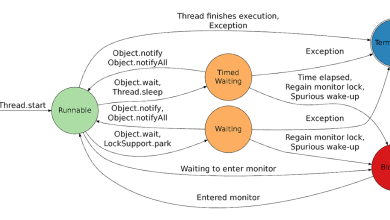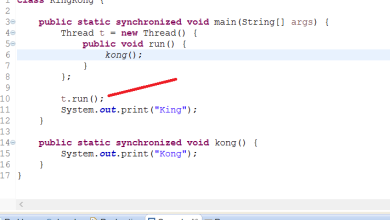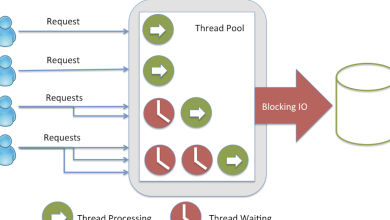5 Reasons to Use Composition over Inheritance in Java and OOP
In this Java and OOP tutorial, I have tried to summarize my experience around composition and inheritance in two main categories, first, the difference between composition and inheritance, and second, when to use Composition over inheritance in Java.
I have already mentioned this design principle, in my list of 10 OOPS and SOLID design principles for Java programmers, here we will take a closer look.
Just to revise, composition and Inheritance are ways to reuse code to get additional functionality. In Inheritance, a new class, which wants to reuse code, inherits an existing class, known as a superclass. This new class is then known as the subclass.
Btw, In order to best understand design patterns, you need to work out some scenarios, examples, etc. It’s best to get this kind of knowledge as part of your work but even if you don’t get there, you can supplement them by joining these online Java design pattern courses and doing some object-oriented software design exercises.
5 Reasons to Prefer Composition over Inheritance in Java
On composition, a class, which desires to use the functionality of an existing class, doesn’t inherit, instead it holds a reference of that class in a member variable, that’s why the name composition. Inheritance and composition relationships are also referred as IS-A and HAS-A relationships.
Because of IS-A relationship, an instance of sub class can be passed to a method, which accepts instance of super class. This is a kind of Polymorphism, which is achieved using Inheritance.
A super class reference variable can refer to an instance of sub class. By using composition, you don’t get this behavior, but still it offers a lot more to tilde the balance in its side.
1) One reason of favoring Composition over Inheritance in Java is fact that Java doesn’t support multiple inheritance. Since you can only extend one class in Java, but if you need multiple functionality like e.g. for reading and writing character data into file, you need Reader and Writer functionality and having them as private members make your job easy.
That’s called composition. If you are following programming for interface than implementation principle, and using type of base class as member variable, you can use different Reader and Writer implementation at different situations.
2) Composition offers better test-ability of a class than Inheritance. If one class is composed of another class, you can easily create Mock Object representing composed class for sake of testing. Inheritance doesn’t provide this luxury. In order to test derived class, you must need its super class. Since unit testing is one of the most important thing to consider during software development, especially in test driven development, composition wins over inheritance.
3) Many object-oriented design patterns mentioned by Gang of Four in there timeless classic Design Patterns: Elements of Reusable Object-Oriented Software, favors Composition over Inheritance.
Since Context uses composition to hold strategy, instead of getting it via inheritance, it’s easy to provide a new Strategy implementation at run-time.
4) Though both Composition and Inheritance allows you to reuse code, one of the disadvantage of Inheritance is that it breaks encapsulation. If sub class is depending on super class behavior for its operation, it suddenly becomes fragile.
When behavior of super class changes, functionality in sub class may get broken, without any change on its part.
Since there are only one method add(), which can insert object into HashSet you override these methods and called your encrypt() method by overriding add().
This automatically covers addAll() as well, because addAll() is implemented using add(), it looks very enticing.
If you look closely you will see that this implementation is fragile, because its relied on super class behavior. If base class wants to improve performance and implements addAll() without calling add() method, following example will break.
public class EncryptedHashSet extends HashSet{ ..... public boolean add(Object o) { return super.add(encrypt(o)); } }
If you have used Composition in favor of Inheritance you won’t face this problem and your class would have been more robust, because you are not relying on super class behavior any more.
Instead you are using super class method for addition part and you will benefit with any improvement in addAll() as shown in below example:
public class EncryptedHashSet implements Set{ private HashSet container; public boolean add(Object o) { return container.add(encrypt(o)); } public boolean addAll(Collection c) { return conatainer.add(encrypt(c)); } ....... }
In short, don’t use Inheritance just for the sake of code reuse, Composition allows more flexible and extensible mechanism to reuse code.
5. Another reason for favoring Composition over inheritance is flexibility. If you use Composition you are flexible enough to replace the implementation of the Composed class with a better and improved version. One example is using the Comparator class which provides compare functionality.
And, here is a nice visual diagram or cheat sheet you can refer to learn why Composition is better than Inheritance in most of the cases:
That’s all about why programmer should favor composition over inheritance in object oriented programming. While there are many more reasons to favor Composition over inheritance, which you will start discovering once you start using design patterns in Java. In nutshell favoring Composition results in more flexible and robust code than using Inheritance.
Though there are certainly some cases where using Inheritance makes much sense like when a genuine parent-child relation exists, but most of the time it makes sense to favor composition over inheritance for code reuse.
Make sure you don’t forget this rule, if you don’t to do this 🙂

- 5 Free Courses to learn Object Oriented Programming (courses)
- How to design a Vending Machine in Java? (questions)
- How to implement a Decorator design pattern in Java? (tutorial)
- 18 Java Design Pattern Interview Questions with Answers (list)
- Difference between State and Strategy Design Pattern in Java? (answer)
- 20 System Design Interview Questions (list)
- How to use Factory method design pattern in Java? (tutorial)
- When to use Command Design Pattern in Java (example)
- 7 Best Courses to learn Design Pattern in Java (courses)
- How to create thread-safe Singleton in Java (example)
- Difference between Factory and Abstract Factory Pattern? (example)
- 7 Best Books to learn the Design Pattern in Java? (books)
- How to implement the Strategy Design Pattern in Java? (example)
- Difference between Factory and Dependency Injection Pattern? (answer)
- 10 OOP Design Principle Every Java developer should learn (solid principle)
- 5 Free Courses to learn Data Structure and Algorithms (courses)
- 7 Books to learn System Design for Beginners (System design books)
Thanks a lot for reading this article so far. If you like my explanation of
the Composition over Inheritance in object oriented programming and in Java and find this article worth your time
then please share it with your friends and colleagues. If you have any
questions or feedback then please drop a note.
P. S. – If you are an experienced Java programmer and want to learn
Design patterns and looking for a free online training course to start with
then you can also check out this
Java Design Pattern and Architecture free course
on Udemy. It’s completely free and you just need a free Udemy account to join
this course.



